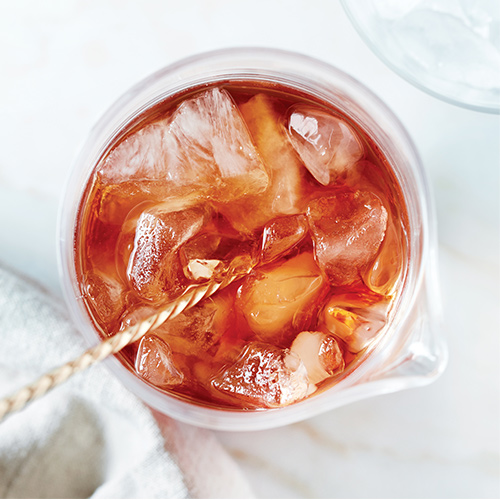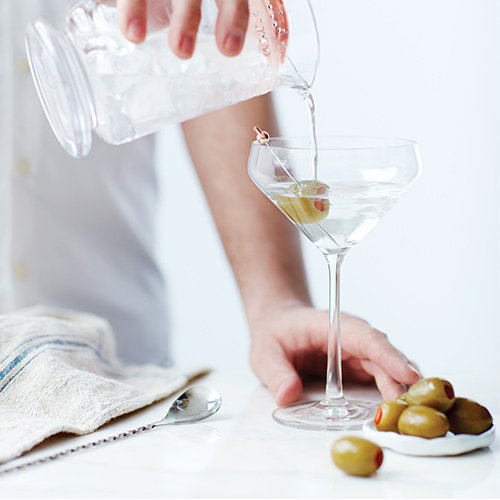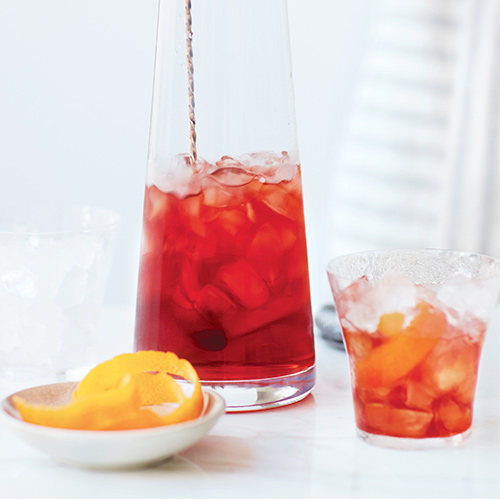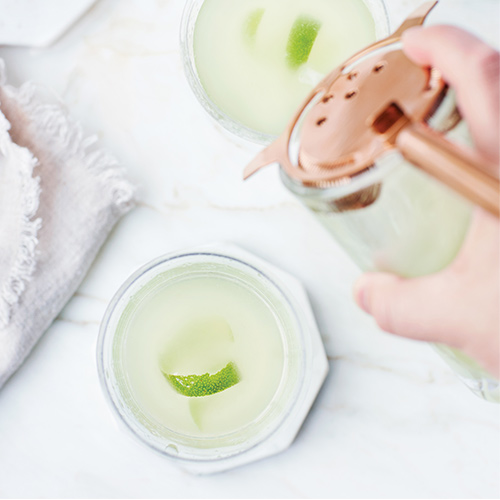Stirred, Not Shaken
Sorry James Bond, but we prefer our martinis stirred—the traditional way! Learn everything you need to know about how to stir up classic cocktails including tools, tricks, technique and recipes.
Manhattan
Stirred Cocktail Tip #1: Taste each ingredient before adding, then stir until no single flavour dominates.
Gin Martini
Stirred Cocktail Tip #2: Let the ingredients and ice “poach” in the mixing glass for up to a minute to reduce stirring time.
Negroni
Stirred Cocktail Tip #3: A stirred cocktail is ready when it loses the whiff of alcohol and acquires a pleasing aroma.
The Last Word
Stirred Cocktail Tip #4: Rule of mixology: shake cocktails with fruit juice, dairy or egg; stir other drinks.
Why Stir?
Some aficionados associate the shards of shattered ice and cloudy appearance of a fiercely shaken drink with cocktail bliss. However, a modern class of mixologists and imbibers is returning to the lost art of stirring cocktails for a silkier mouth feel, more velvety texture and, some would even argue, superior chill factor and more nuanced taste.
Whether stirred or shaken, spirits and cocktail ingredients are mixed with ice not only to combine and chill them, but to dilute a drink to its proper strength and flavour profile. The secret to a balanced drink is to taste each ingredient be- fore you add it to the mix, then continue to stir until the cocktail has a full, round flavour in which no single ingredient dominates. Shaking is faster: just 20 hard shakes (as little as 15 seconds) in a cocktail shaker can do the trick. But stirring is more elegant: consider it two minutes of entertainment for your guests while creating a perfect cocktail.
Tools for Stirring Cocktails
The right tools make the job of stirring more efficient, comfortable and stylish. Gourmet shops, Chapters Indigo stores or thecraftybartender.com are all good sources for items like these.
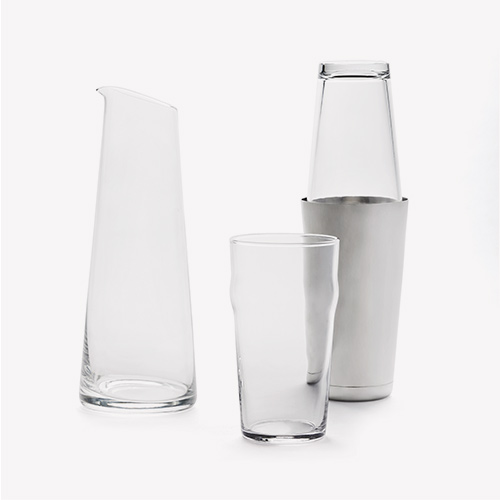
Mixing Glass
Use a pint beer glass or the thick-walled mixing glass from a two-part Boston cocktail shaker. For batched drinks, look for slim, vintage-style glass pitchers.

Yarai Mixing Glass
Named for a traditional Japanese weaving design, these diamond-patterned mixing pitchers can have a flat or stemmed bottom. The best are “Made in Japan.”
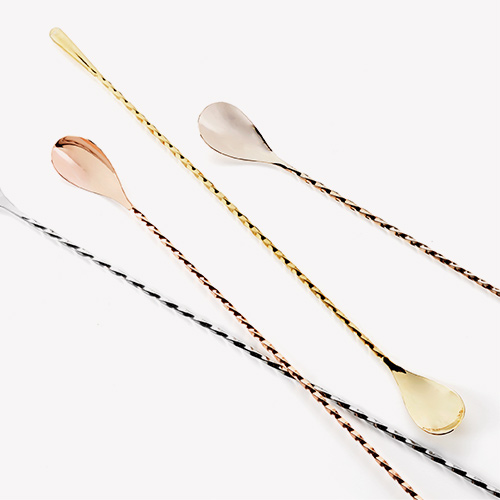
Mixing Spoon
Look for tighter, larger coils on the stem, which make for easier stirring. Ultra-long, gold- and rose-gold coloured spoons have recently become trendy.
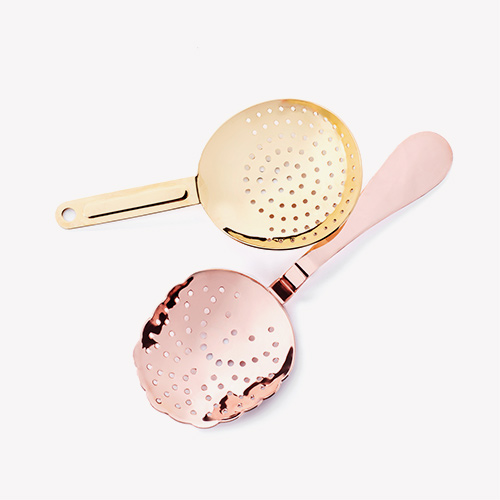
Julep Strainer
This is the strainer traditionally used with a free-standing mixing glass (versus the spring-coiled Hawthorne strainer, which fits into a metal shaker).
Stirring Techniques
Depending on stirring speed, it can take from 45 seconds to two minutes to achieve perfect dilution and flavour balance.

Pre-Chill
Chill mixing glass by storing it in the fridge or freezer for a few minutes (not long enough for the glass to look frosty) or filling half- and-half with ice and water for about one minute.

Get Acquainted
Empty the mixing glass and fill three-quarters full with fresh ice. Measure and add each ingredient, tasting each element (such as vermouth, spirits, bitters) be- fore adding to the mix to familiarize yourself with each flavour component of the cocktail.

Spooning
Place the roundedback of mixing spoon against the wall of the mixing glass. Use your thumb to steady the spoon, and glide your index and middle fingers along the coils on its stem, to guide it smoothly around the sides of the glass.

Taste Frequently
Every 30 seconds, check for proper dilution by using a fresh cocktail straw to taste, putting your fingertip over the top to capture a small amount of liquid; sample and discard. The drink is perfect when no single ingredient dominates.
